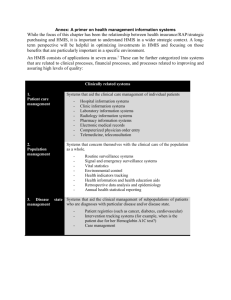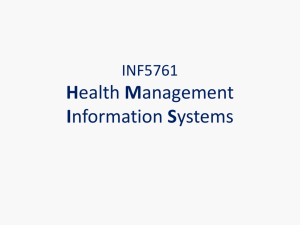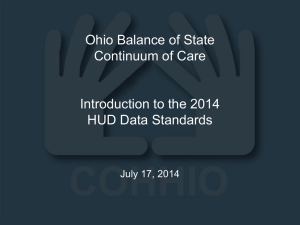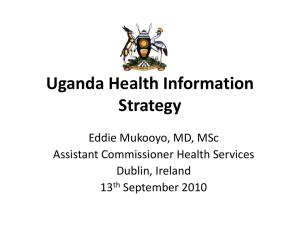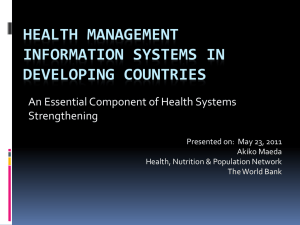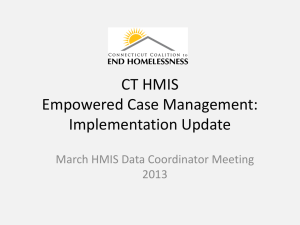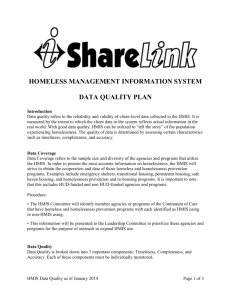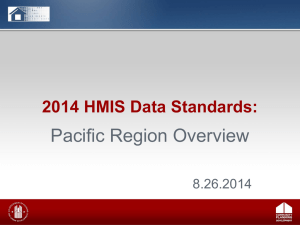WEAB001 – Assessment Of Health Management Information System
advertisement
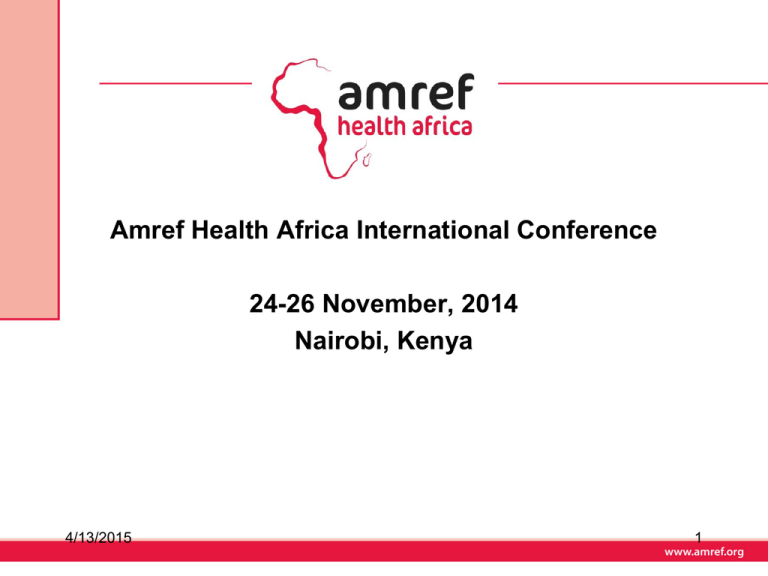
Amref Health Africa International Conference 24-26 November, 2014 Nairobi, Kenya 4/13/2015 1 Assessment of Health Management Information System (HMIS) Performance at Health Facilities of Afar Region, 2013 Presenter: Mesfin Ayeta 4/13/2015 2 Presentation Outline 1. Background 2. Methods 3. Result and Discussion 4. Conclusion 5. Recommendation 4/13/2015 3 Background In developing countries, the collection, compilation, analysis and utilization of health data remains to be practically major problem. In Ethiopia, the HMIS is characterized by burdensome data collection and inadequate staff skill and also the information flow is fragmented (WHO, 2007). This resulted in redundant and conflicting reports and poor quality of data in terms of accuracy and timelines. 4/13/2015 4 In Afar region, despite some improvements were observed; the problems on HMIS performance is still there. However, there are not scientific evidences showing the possible determinants of HMIS performance in the region. 4/13/2015 5 Objectives General Objective To assess the status of HMIS performance at health facilities level and identify its determinant factors. Specific Objectives To assess the status of HMIS performance at health facilities To find out challenges and best lessons of HMIS performance in health facilities 4/13/2015 6 Methods Study Design A cross-sectional study design was carried out. Data Source Study Unit Health facilities Service providers Patients/Clients records 4/13/2015 7 Sample Size Determination The Sample size is calculated based on the study unit: Health facility: Rule of thumb sampling method was used. The rule states, if the number of units are less than 50, take a 30-50% sample. Record Review: Single Population Proportion formula was used. 384 Individual records were reviewed. Health Professionals: All the selected health facilities health workers. 4/13/2015 8 Data collection instrument/Tools Interview using questionnaire Observation using checklist Record review Self-administrative Questionnaires In-depth Interview 4/13/2015 9 Data analysis SPSS version 20 was used to analyze quantitative data. Tables, figures and frequencies Logistic regression Thematic analysis for qualitative data 4/13/2015 10 Results and Discussion Description of Respondents Variables Frequency Respondent’s qualification MD/HO clinical nurse/midwife Para medicals 4 (3.2%) 80 (63.5%) 42 (33.3%) Responsibilities of Respondents Head of facility and units Clinical health service providers Para medicals 15 (11.9%) 79 (62.7%) 32(25.4%) HIMIS Training Received Not received 40 (31.7%) 86 (68.3%) 4/13/2015 11 Existence of Performance Monitoring Team (PMT) and HMIS guideline 69% 69% 80% 60% 40% 31% 31% 20% 0% Present PMT HMIS guideline 4/13/2015 12 Presence of HMIS focal person and Supervision at health facilities 80% 71% 65% 60% 29% 35% 40% 20% Not exist 0% Exist HMIS focal person 4/13/2015 Supervision 13 HMIS process and practice at Health facilities Frequency Variables Yes Checking reports before sending to the next level? 41.7% 35.4% 22.9% Use standardized set of indicator 29.2% 41.7% 29.2% Send HMIS Report based on scheduled 12.5% 87.5% Health facilities received written feedback on HMIS performance 4/13/2015 No 20.8% 39.6% I do not Know 37.5% 14 Knowledge, attitude, practice and motivation of the health personnel on HMIS performance Knowledge 14.3% Adequate knowledge Inadequate knowledge 85.7% 4/13/2015 15 Knowledge, attitude, practice and motivation of the health personnel in HMIS performance Motivation 11.1% Better Motivated Not motivated 88.9% 4/13/2015 16 4/13/2015 17 Data quality of patent’s record 88.2 90 81.5 80 68.2 70 65.8 62.1 60 50 40 37.9 34.2 31.8 30 18.5 20 11.8 10 0 Data quality Status 4/13/2015 18 Health professionals culture of information use was found to be 37.3%. Study in Jimma (2011) shows that utilization of health information was 32.9%. In Tanzania (2011), 42% did not use the collected data for decision making process. Study in Malawi (2005) revealed that that data is incomplete as there are gaps in the data collection tools. 4/13/2015 19 Factors associated with information use for decision making process Health professionals who work in Health facilities which established PMT were 2.83 times more likely to use information. Health care providers who had positive attitude were 2.79 times more likely to use information. Motivated Health professionals were 3.5 times more likely to use information than not motivated. 4/13/2015 20 Study conducted in Nigeria (2012) shows motivated health professionals were more likely to use information for decision making process. Similarly, India in 2007 shows establishment of PMT had showed significant association with health professional information use. 4/13/2015 21 Conclusion Data quality of HMIS tools were found to be very poor. Information use habit of health workers for decision making were found to be very low. Establishment of performance monitoring team, motivation and attitude health care providers were found to be significantly associated with information use. 4/13/2015 22 Recommendation The regional health bureau needs to design in-service trainings on information use culture and data quality. The regional and district health offices should regularly give supportive supervision and technical assistants to health facilities Regional and district health offices shall encourage, train and follow up health care providers to establish performance monitoring team. Motivating health care providers and providing training on moral and ethical issues is recommended to improve information use for decision making. 4/13/2015 23 THANK YOU! 4/13/2015 24
